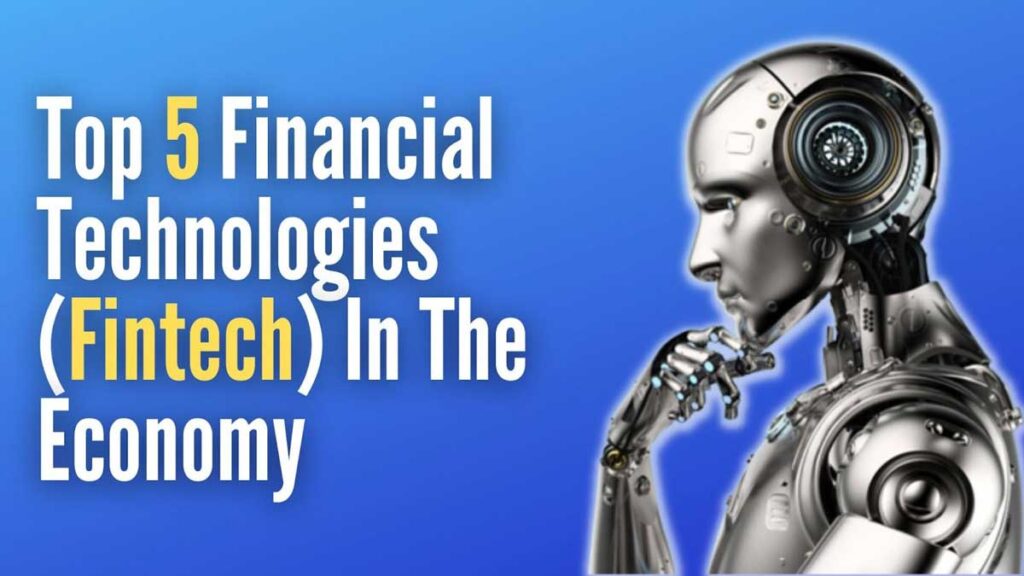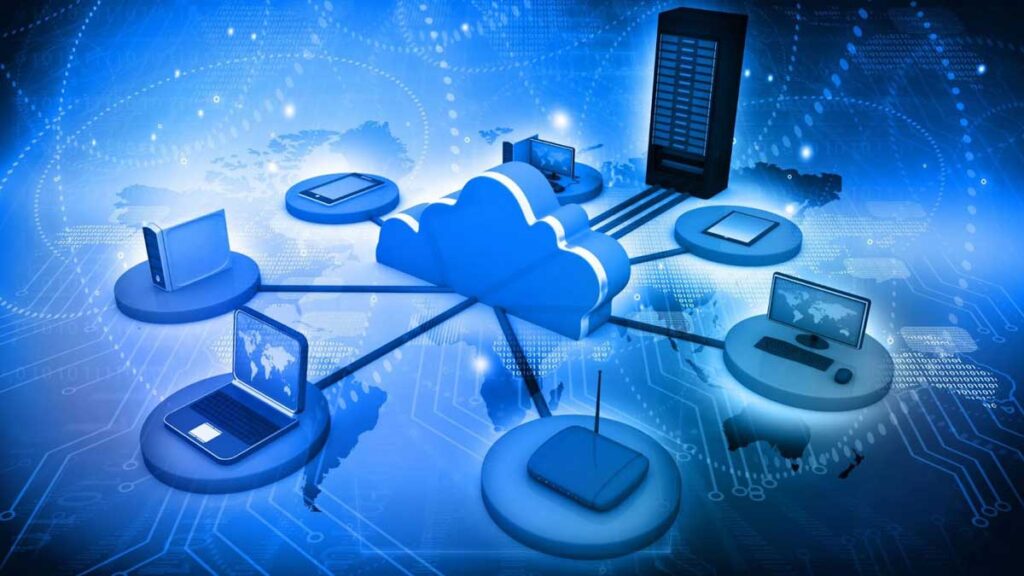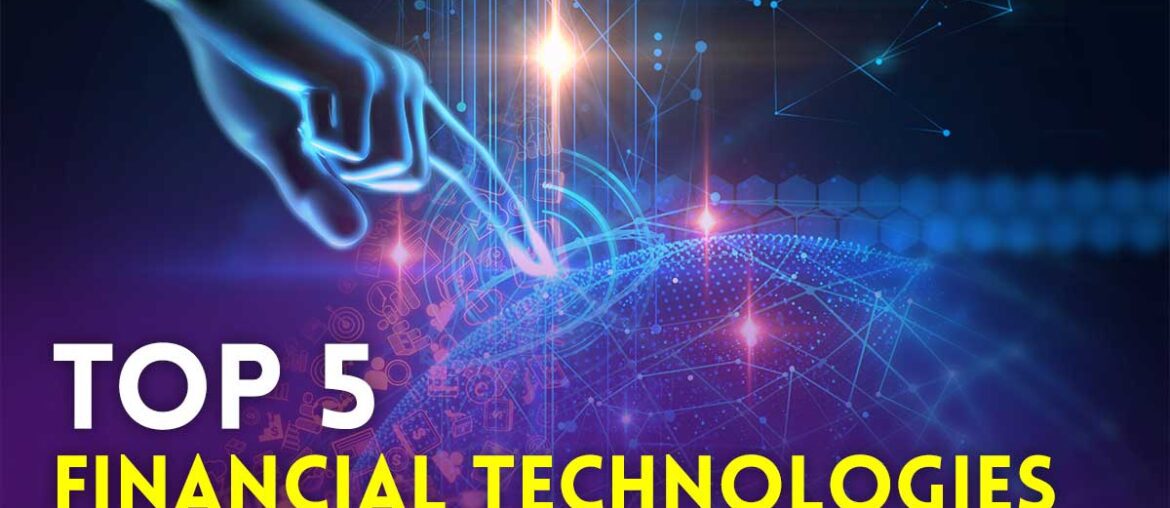
Over the past ten years, fintech, one of the most disruptive businesses, has fundamentally changed how we engage with financial institutions. But it hasn’t stopped there. As client expectations continue to rise, new technologies are introduced every year. Because of this, executives and business owners must understand where financial technology is today and where it will stay relevant and competitive. Let’s talk about the top 5 financial technologies (fintech) in the economy.
What Is Fintech?
The term “fintech,” which stands for “financial technologies,” refers to a broad category that encompasses the creative application of technology to the development and provision of financial services and goods.
Fintech (financial technologies) is being used in many different business sectors, including lending, consulting, investment management, and payments. Many fintech businesses use mobile technologies, big data, and advanced analytics to customize goods for different consumer segments.
However, fintech places technology at the center of the financial services offering, shapeshifting how businesses interact with their clients. Banks are, of course, vast adopters of technology. Increased competition, lower client pricing, and greater access to financial services for those who have traditionally been underserved are just a few of the benefits of the fintech boom on society. And fintech is still in the early stages of its evolution.
Top 5 Financial Technologies (Fintech)
1. Blockchain

With distributed ledger technology (DLT), data may be captured, exchanged, and synchronized simultaneously across a distributed network of participants and numerous data stores. Some DTLs send and store their data using blockchains, and they record and synchronize the data across the network using algorithmic and cryptographic techniques.
DTL will support ecosystem financing increasingly by enabling the simultaneous storage of various financial transactions. Cross-chain technology will increasingly make it possible for chains created using various protocols to communicate and share data and value across various tasks and sectors, including payments processing and supply chain management.
The key technologies behind current fintech developments like digital wallets, digital assets, decentralized finance (DeFi), & non-fungible tokens (NFT) will continue to play a significant role. These technologies include smart contracts, zero-knowledge proof, and distributed data storage and exchange.
Additionally, established players like institutional investors and funds are gradually increasing the proportion of digital assets in their portfolios, thereby expanding access to capital and enhancing the potential of blockchain and DTL to upend established markets.
Decentralized finance (DeFi), a type of blockchain-based finance that employs smart contracts to do away with the requirement for a central middleman, is one example that is getting momentum.
DeFi now holds digital assets with a total locked-up value (TLV) of $2.1 trillion, over 50 times over the previous 10 months. Blockchain’s growing technological value is further demonstrated by the $15 billion in income digital asset exchanges generated in 2021.
2. IoT

IoT is finally maturing after spending years on the lower reaches of the hype cycle, with significant financial implications. IoT systems comprise three layers: wireless communication networks, application and operations support, and perception and smart sensor systems.
To automate item identification and logistics management, RFID labeling still has many untapped sensor potentials. IoT communication solutions are also growing, enabling a greater range of devices to interact via wired and wireless networks, near-field communication technologies, low-power wide area networks, narrow-band IOT, connected end-point devices, and centralized control management.
Finally, embedded systems and smart technologies are advancing quickly and enabling more sophisticated communication with objects.
From the standpoint of financial applications, take into account the fact that many investment strategies and governmental regulations are now influenced by environmental, social, and corporate governance (ESG) factors.
For instance, some major nations have committed to reaching carbon neutrality and peak emissions. In addition to increasing the use of renewable energy, accomplishing these targets will depend on how well industrial energy and power efficiency are monitored and managed.
IoT applications can be used in this ideal scenario. For instance, carbon trading will increasingly be indexed to IoT measures, creating new opportunities for savvy players.
IoT also plays a major role in being used by insurers to accelerate and streamline the underwriting and claims processes, improve client interaction, and identify risk more precisely. The age, residence, and creditworthiness of a driver are just a few examples of the indirect factors that auto insurance has historically used to determine premiums.
3. Artificial Intelligence [AI]

This is one of the main technologies that’s gonna transform financial technology into a new level. According to McKinsey, artificial intelligence (AI) can potentially increase the value of the global banking sector by up to $1 trillion every year.
Banks and other financial institutions are predicted to adopt an AI-first mentality that would better equip them to fend off the incursion of growing technology companies.
Automatic factor discovery, or the computer-based identification of the factors that cause outperformance, will be more common in financial services, helping improve financial modeling across the industry.
Knowledge graphs and graph computing will both take on more importance as crucial applications of AI semantic representation. In the next years, their capacity to help in the formation of associations and the discovery of patterns across complex financial networks by utilizing numerous, frequently disparate data sources will have far-reaching implications.
In addition, analytics that incorporates improved privacy protections will encourage minimum data utilization, or the use of just pertinent, essential, and appropriately cleansed information, in the training of financial models.
Among these is federated learning, a type of decentralized machine learning that solves the privacy risk associated with centralizing datasets by bringing the advanced computational capacity to the data rather than the other way around.
A new frontier in consumer protection will be driven by advanced encryption, secure multi-party computing, zero-knowledge proofs, and other privacy-aware data analysis techniques.
Many financial institutions continue to use AI sporadically and carelessly, frequently only implementing the technology in niche use cases or industry verticals. However, the leading players in the banking sector are revolutionizing their operations by systematically implementing AI throughout the whole lifespan of their digital operations.
4. Hyper Automation

Process Automation (RPA) and other tools and technology enhance the effectiveness of decision-making and the capacity for task automation in financial technology.
RPA is already a significant part of digital transformation, but technology continually expands its boundaries. RPA makes it simple for businesses to deploy software robots like chatbots at scale. RPA’s primary purpose is to assign robots the processing workflow data and business interactions, automating and standardizing business execution in the process.
The primary standards for determining the viability of RPA technology are high repeatability, clear reasoning, and strong stability. RPA and AI will eventually be more closely connected, enhancing RPA’s ability to handle increasingly complicated business scenarios and expediting the provision of financial services.
Automating financial processes & accounting reconciliation for financial organizations is already being done by RPA throughout middle and back-office activities.
RPA is currently being used in areas such as process automation for accounts receivable & payable, fund appropriation at shared finance & accounting service centers, work hour adjustment and review, automation of financial recording, reporting, and treasury procedures, as well as period-end accounting and settlement.
Automating manual tasks lowers human error, increases productivity, and enables firms to adjust to demand variations. We anticipate RPA to become more widely adopted across the industry, despite being well-established among major financial companies.
For instance, by utilizing robots that mimic human activities for basic paperwork and decision-making, accounts payable operations might be automated to 60%.
5. Cloud Computing

According to McKinsey research, by 2030, the top 500 global corporations would generate more than $1 trillion in EBITDA (earnings before interest, tax, depreciation, and amortization) due to cloud technology.
According to our research, migrated applications may be developed and maintained more effectively by using the cloud, which can also minimize downtime by 57% and enhance infrastructure cost efficiency by 29%.
This reduces the cost of technical violations by 26%. In addition, by utilizing embedded and automated security processes and controls, the cloud can enhance platform integrity.
DevSecOps, or the thinking that security is a responsibility that can be exercised across an organization in parallel with the expansion of its development and operations, is a prime example of a cloud-based feature that lowers technical risks by utilizing a consistent, cross-environment technological stack.
The three main types of cloud services—public cloud, hybrid cloud, and private cloud—should be understood by financial institutions. Public cloud refers to an environment where the infrastructure is held by companies that offer cloud computing services and are available to the general public or a wide range of businesses.
Hybrid cloud infrastructure comprises two or more distinct types of clouds (private and public), each of which is maintained separately but linked via proprietary technology. Private cloud refers to the infrastructure explicitly created for a single customer’s use. It is deployable within the organization’s data centers or external hosting resources.












